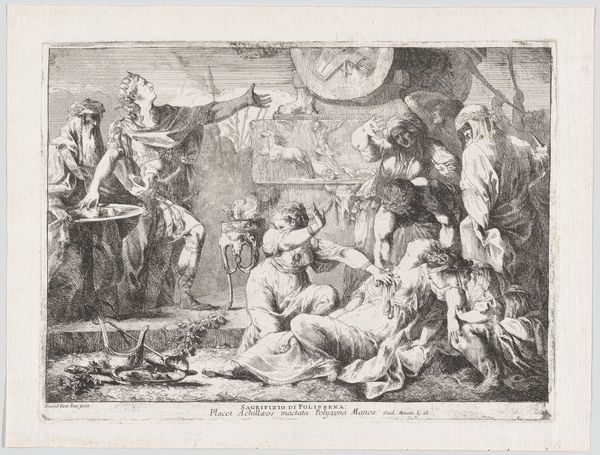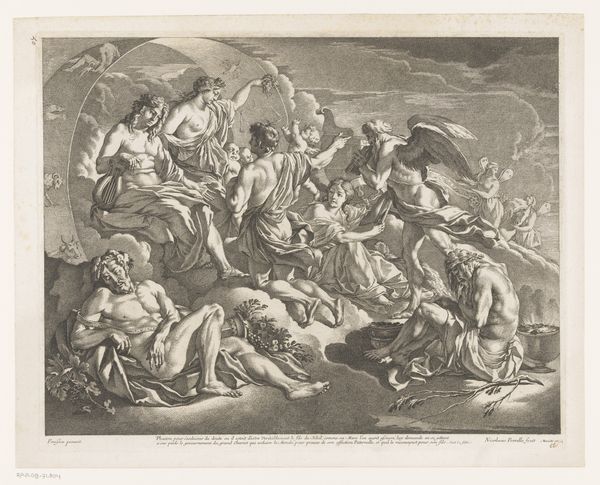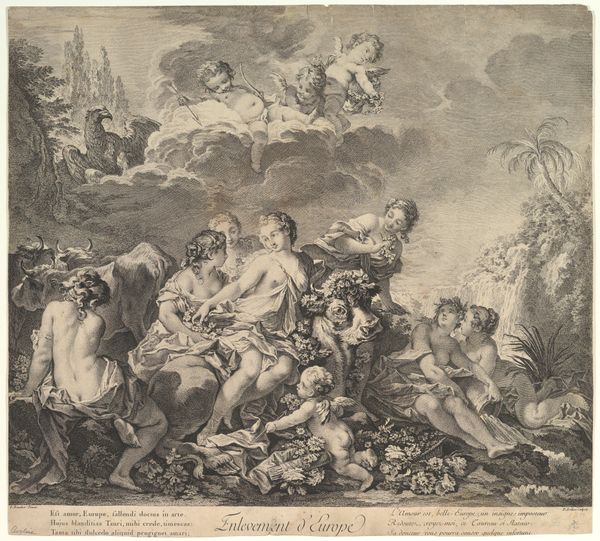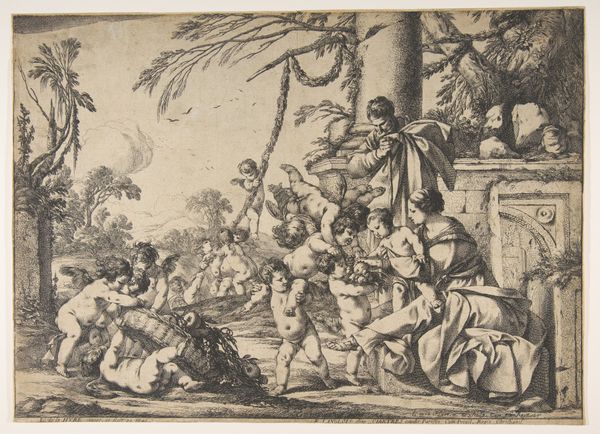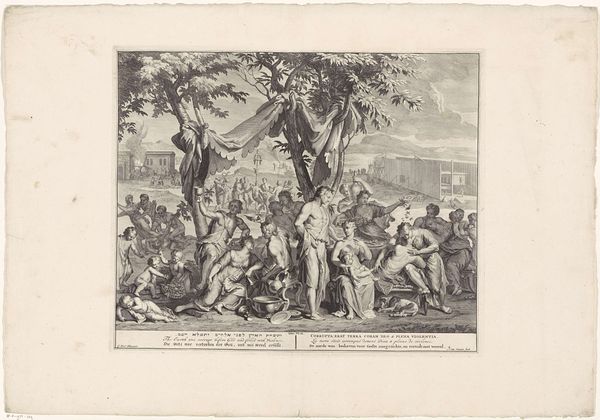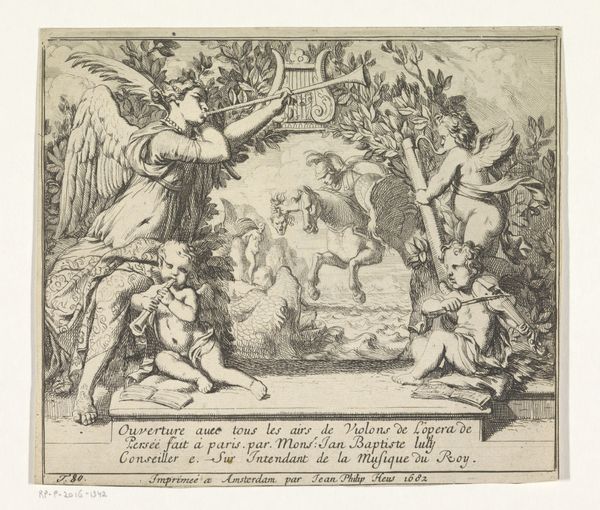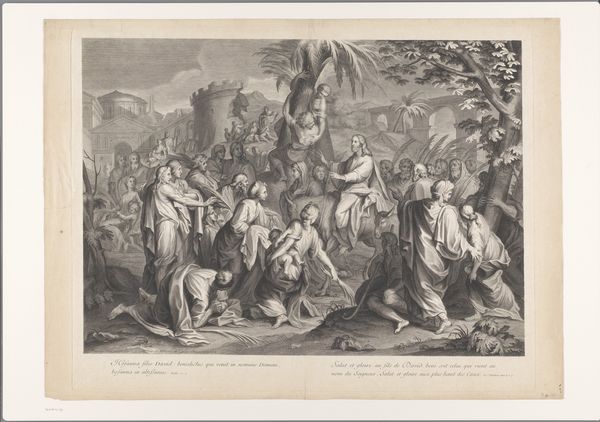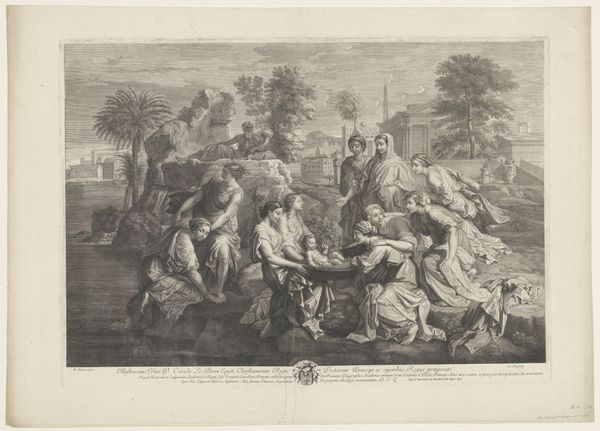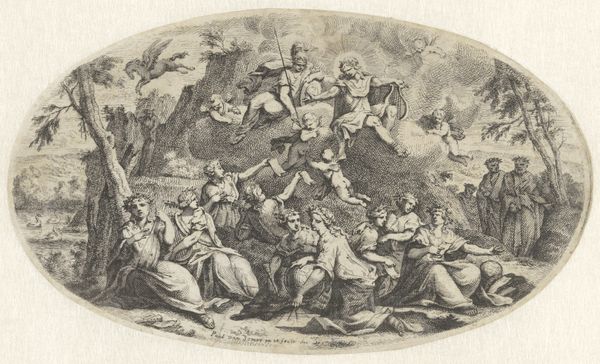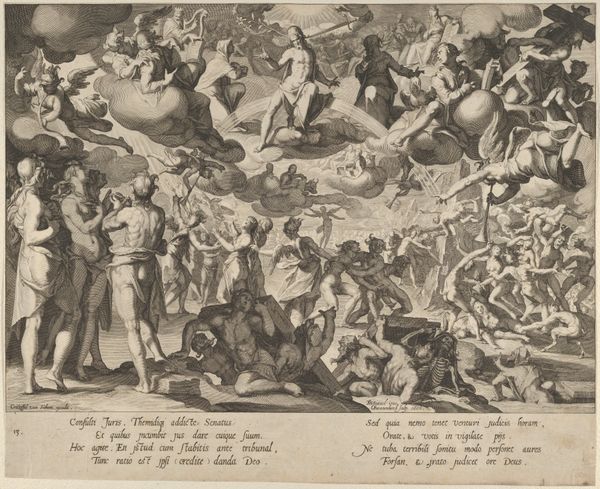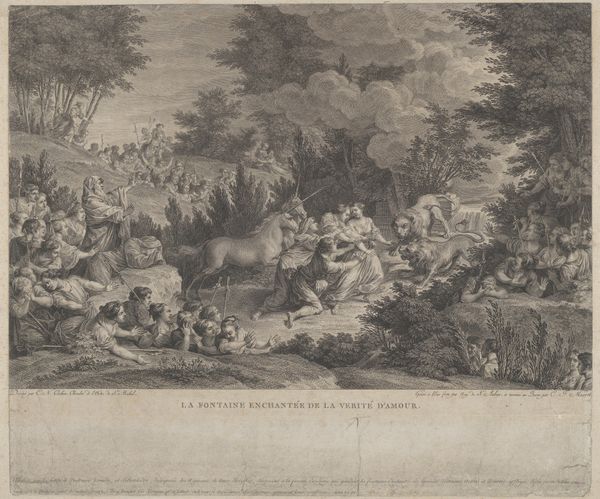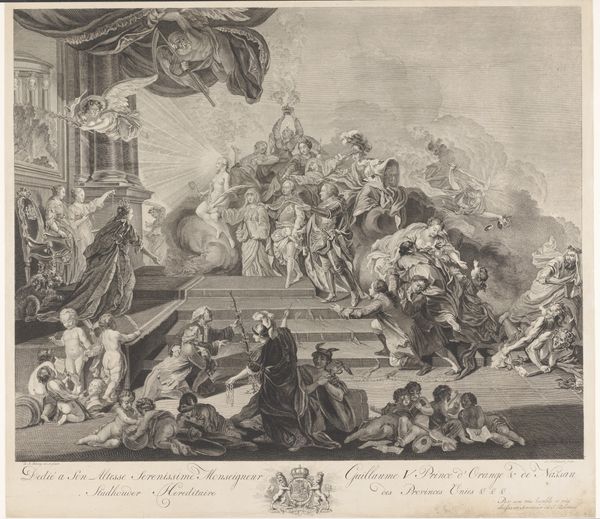
print, engraving
#
neoclacissism
#
allegory
#
narrative-art
# print
#
figuration
#
history-painting
#
engraving
Dimensions: sheet: 47.4 × 49.6 cm (18 11/16 × 19 1/2 in.)
Copyright: National Gallery of Art: CC0 1.0
This print, made by Franz Anton Maulbertsch in the 18th century, uses etching, a method of printmaking. The artist covers a metal plate with a waxy ground, and then draws into it with a sharp needle. Acid is then applied, biting into the exposed metal lines, which are then inked and printed. Look closely, and you’ll notice the qualities of the etched line – delicate, precise, yet capable of describing a wide range of textures. This technique wasn’t just about replicating an image. It was a medium in its own right, lending itself to a graphic style, which suited the quick communication of ideas in the Enlightenment. In Maulbertsch’s time, printmaking was essential for disseminating ideas and artworks across Europe. It helped the development of a shared visual language. But the handcraft skill involved in etching also gave each print a unique character, an intimacy that belies its role in mass communication. The very materiality of the medium—the plate, the acid, the ink—became integral to the artwork's meaning.
Comments
No comments
Be the first to comment and join the conversation on the ultimate creative platform.

